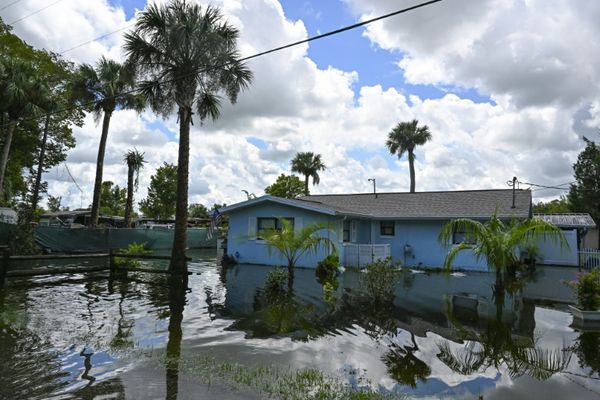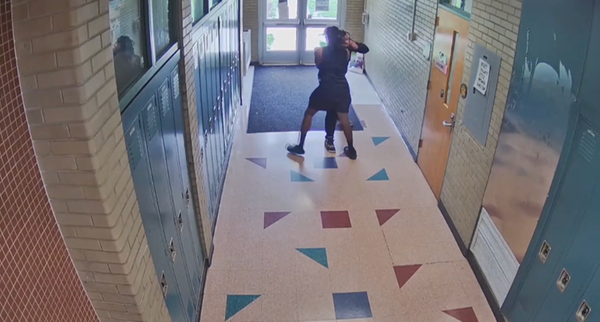
After euthanasing more than 40 million — about 10% — of the state’s bees due to the appearance in Australia of the deadly bee parasite varroa destructor 15 months ago, the NSW government has ended an eradication program that has damaged the state’s honey and bee sector.
“As of September 19, 2023, the National Management Group (NMG), as peak decision body for the national varroa mite emergency response, have reached a decision to shift the focus of the response from eradication to transitioning to management of varroa mite,” the NSW Department of Primary Industry (DPI) said.
“This transition to the new focus will take time and we will continue to update the information on these pages as the plan progresses. We value the sacrifice of every beekeeper and thank everyone for their cooperation during the varroa mite response and this evolving situation.”
The news was met with relief in the industry as it followed a growing chorus across the sector for a sharp strategic turn towards managing the mite, as is done in almost every other country.
The arrival of spring — and the concomitant imperative of mass pollination — has only sharpened arguments to halt a program of brutal, enforced bee euthanasia that has devastated the beekeepers of 276 colonies that have been destroyed (a number rising daily). Australia must now find ways to live with varroa destructor and not inflict too much further damage on the $14 billion honey and honey bee industry.
The mite was thought to have entered Australia at the NSW port of Newcastle 15 months ago but many in the industry now believe that it had arrived on the east coast perhaps a year earlier.
“The sheer number of the mites that were found in hives near Newcastle, just after it was supposed to have arrived, show that it had landed here sometime beforehand, probably about a year,” said one beekeeper who, like most, asked not to be named due to the necessity of dealing with the government as the crisis rolls on.
Small beehives can survive on container ships for many months undetected, and Sydney or Newcastle are the likely places where the bees had previously arrived. If this is found to be true, the mite has long escaped into Australia’s wild (or feral) bee population of European bees.
Australia has enjoyed historical protection against the varroa mite, primarily due to its geographical isolation, yet most other countries have long managed it using natural and synthetic chemicals, husbandry practices and bees that are partially tolerant to varroa. Still, managing and monitoring hives for varroa increases beekeepers’ costs, especially for labour.
Varroa destructor attaches itself to a bee and feeds on it, weakening it and eventually killing entire colonies. Since arriving in NSW, it has spread up and down the coast, into parts of the west and on to the border with Victoria, the nation’s largest fruit and nut producer. Neighbouring states have closed their borders both to bees from NSW and beekeepers from other states bringing their bees into NSW to make honey, affecting business on both sides.
The NSW DPI had remained resolute in its campaign of eradication that saw the creation of a “zone” system as it continued to destroy the primary asset of commercial beekeepers as well as hobbyists.
The past 15 months have seen an expansion of the “red” eradication zone, with local beekeepers bracing themselves for the government-ordered euthanasia of their colonies. After red zones, which have a circumference of 10km, there are “purple” surveillance zones with a 25km circumference where officials monitor and inspect managed and feral honey bees for incursions, and “grey” general emergency zones beyond that.
“The decision to pursue eradication is taken by industry partners, the Commonwealth, and the states and is based on the best science, data and research available, as well as with the long-term future interests of Australia’s $14.2 billion honey and pollination-reliant industries in mind,” said Dr Shannon Mulholland, NSW DPI deputy incident controller.
And there’s the rub: although it is the largest producer of commercial honey in Australia, NSW gets only one ”vote” at the table, equal to all other states as well as another 10 or so stakeholders.
“The other states are quite prepared for NSW to be the experiment,” one honey producer said.
The industry had believed, rightly in the end, that the spread of the parasite is unstoppable. The restrictions on the seasonal moving of bees for fruit and nut crop pollination caused problems last year and are set to cause even more pain for the agriculture sector this year.
But the biggest hit during the eradication phase was for honey producers in peak season and for those unable to move hives if they are in the increasingly large red and purple zones. More critically, they were unable to access their production facilities, many of which sit in factories and sheds up and down the coast — which are the areas that have been so far most affected. This means honey is overflowing on frames on farms, with no way of extracting it.
“Some producers have had almost all their hives destroyed. It will take years to make them back; quite a few are leaving the industry. For most it’s the only source of income, yet not being able to produce honey and they still have plant and equipment, trucks, etc that are still being paid off,” a honey producer said.
There are already demands for more compensation, and class actions are being explored.
The zones will remain in an effort to contain the mites, and the DPI remains stretched to breaking point. It now takes between 10 days and two weeks to test hives for varroa. Some beekeepers say they have not been directly contacted by the DPI many days after their colonies have been determined to be in red or purple zones, and that there is widespread fear in the industry about moving hives due to the existence of varroa destructor.
The outlook remains somewhat grim. Industry site BeeAware.org has noted that if varroa were to become established in Australia 95-100% of the feral honey bee colonies in Australia would die, which would greatly reduce pollination services.
“Management pressures from the pest would likely cause 50–60% of Australian beekeepers (mostly recreational and side-liners/semi-commercial) to leave the industry,” according to the site. “Commercial beekeepers would likely remain, however they would be challenged by increased labour costs to keep hives alive and productive.”







